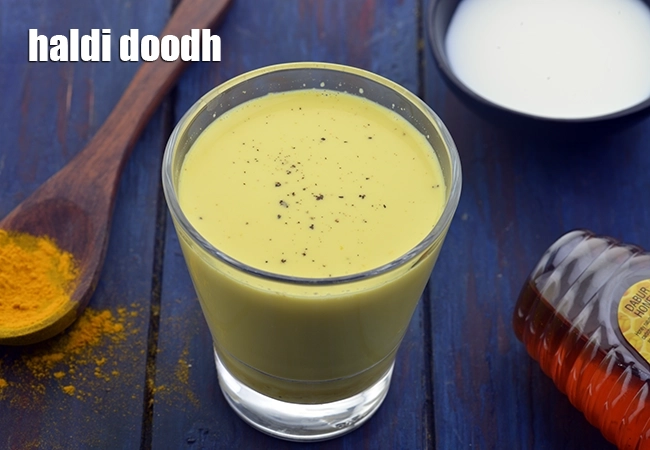turmeric powder

Table of Content
What is turmeric powder, haldi powder?
Haldi powder, more commonly known as turmeric powder, is a vibrant yellow spice derived from the root of the Curcuma longa plant. It's a fundamental ingredient in Indian cuisine, treasured not only for its distinctive earthy, slightly bitter, and warm flavor but also for its brilliant color. The active compound responsible for most of turmeric's powerful properties is curcumin, which gives it its characteristic hue and numerous health benefits. In India, it's virtually impossible to imagine a savory dish without this ubiquitous spice.
Ubiquitous Usage Across India
Haldi powder's usage spans every corner of India, making it truly ubiquitous in Indian cooking. From the rich gravies of the North to the tangy rasams of the South, and the subtle vegetable preparations of the East to the spicy curries of the West, turmeric is an indispensable spice. It's used in almost all curries, dals, vegetable dishes, and rice preparations to add color, flavor, and its inherent goodness. Beyond daily cooking, it plays a significant role in pickles, chutneys, and even some traditional snacks. Its versatility in blending with other spices makes it a cornerstone of Indian culinary artistry.
Easy Availability and Recipe Examples
Haldi powder is incredibly easy to find across India, available in every local grocery store, supermarket, and spice shop. It's sold both in whole dried form (turmeric fingers) and, more commonly, as a finely ground powder. This widespread availability ensures that it's a staple in every Indian kitchen.
Here are a few recipe examples highlighting its diverse usage:
- Dal Tadka: A quintessential lentil preparation where turmeric is added during cooking for color and flavor, often finished with a tempering (tadka) of spices.
- Aloo Gobhi: A dry vegetable dish featuring potatoes and cauliflower, where haldi provides the characteristic yellow hue and earthy undertones.
- Vegetable Biryani: Used in the rice and vegetable layers for both color and flavor, contributing to the overall aromatic profile.
- Turmeric Milk (Haldi Doodh/Golden Milk): A popular bedtime drink, especially during colder months or for wellness, made by simmering milk with turmeric and other spices.
Health Benefits of Haldi Powder
The reverence for haldi in India extends beyond its culinary attributes to its profound medicinal and health benefits, which have been recognized in Ayurveda for centuries. The primary active compound, curcumin, is a powerful anti-inflammatory and antioxidant. This makes turmeric beneficial for managing various inflammatory conditions and protecting the body from oxidative damage.
Historically and presently, it's used as a natural remedy for a variety of ailments. Its anti-inflammatory properties are often cited for joint pain relief and supporting overall well-being. It's also believed to aid digestion, boost immunity, and possess antiseptic properties, which is why it's often applied topically to minor cuts and wounds. Some research even suggests potential benefits for brain health and mood regulation.
Beyond the kitchen and medicine cabinet, turmeric also plays a significant role in Indian culture and rituals. It's considered auspicious and is used in religious ceremonies, weddings, and traditional beauty practices, often in the form of a paste (ubtan) for glowing skin. This holistic integration into daily life, from food to health to cultural practices, truly solidifies haldi powder's status as a golden spice in India.
Also Known as
Haldi, Manjal podi, haldi powder
How to select turmeric powder, haldi
• Although turmeric powder is readily available at almost all grocery stores and supermarkets, it is advisable to buy only good brands and from only reliable sources as it is prone to contamination and artificial colouring to make it attractive.
• Always verify the freshness, by checking the date of packaging and expiry, and buy only a fresh lot for maximum flavour and aroma.
• When time permits, it is better to buy the dried rhizomes and grind them yourself to avoid additives and contamination.
Culinary Uses of turmeric powder, haldi
sabzis using turmeric powder
1. Also called "Chane Jaisalmer Ke", this dish of red chana simmered in a curd gravy makes a wonderful accompaniment for both rice as well as rotis. Traditionally, this Dahi Chane ki Sabzi is served with missi roti as the two complement each other well in flavour and texture; the curd-based subzi offsets the dryness of missi rotis beautifully.
2. palak paneer recipe is one of the many of the best loved vegetarian Punjabi dishes are the ones where paneer is combined with a vegetable. Paneer is widely used and very popular in Punjab due to the abundance of milk and milk products in the area.
3. vegetable jalfrezi is a popular Punjabi vegetable jalfrezi sabzi. vegetable jalfrezi features mixed vegetables cooked in a base of tomato sauce spiked up with sautéed green chillies, ginger, onions, and such flavourful ingredients.
Indian drinks using turmeric powder
1. haldi doodh recipe | hot turmeric milk for cold and cough | golden milk | haldi wala doodh is a soothing drink for the throat during cold and cough. Learn how to make golden milk.

2. Warm Honey Lemon Water with Turmeric | anti-inflammatory recipe for cold | anti-inflammatory, anti-fungal cold remedy with turmeric | ant-inflammatory homey lemon water | is a simple detox solution that can be consumed everyday, first thing in the morning. We all know that lemon juice and turmeric have amazing health benefits – and this easy recipe brings both together.

• Turmeric is an indispensable spice, which imparts a musky flavour and yellow colour to curries.
• Almost all Indian vegetable dishes use turmeric either separately or as part of the masala (spice mixture).
• It is also used in recipes comprising rice, lentils and dry beans.
• A small pinch of turmeric powder would is enough to add a pleasant orange-yellow hue to salad dressings.
• As awareness about the ill effects of pesticides and fertilisers rises, people have started soaking and rinsing their vegetables and greens in water mixed with turmeric and salt, as it helps remove a lot of chemicals from the surface.
How to store turmeric powder, haldi
• Turmeric powder should be stored in a cool and dry place away from sunlight.
• Too much heat will volatilise and dissipate its aromatic essential oils, while high humidity will cause it to cake. Sunlight will cause it to fade.
• Older stock should always be used first.
• Tightly close the container after each use to retain its aroma and flavour.
Health benefits of turmeric powder, haldi
Turmeric helps in digestion of food thus helping to overcome indigestion. Haldi may help in reducing the growth of fat cells in the body. Turmeric, being rich in iron, is highly valuable in the treatment of anaemia and both the root as well as the powder should be a regular part of an anaemic diet. One of the health benefits of turmeric is it’s anti-inflammatory property due to the active compound, Curcumin, which helps to relieve inflammation of the joints and thus is a ladder to relieve pain related to arthritis. The curcumin in haldi also helps to ward of the bacteria’s causing cold, cough and throat irritation. Turmeric benefits in diabetes management by lowering blood glucose levels. Its antioxidant and anti-inflammatory effects are useful in the treatment of diabetes patients. It is known to be a good brain food and keep diseases like Alzheimer’s at bay. See here for detailed turmeric benefits.

Related Glossary
Follow US
Recipe Categories
- Vitamin B12 Cobalamin Rich Recipes 33 recipes
- Low Calorie, Weight Loss Indian Recipes 421 recipes
- Low Cholesterol Indian Recipes 308 recipes
- Healthy Indian Breakfast 373 recipes
- Indian Diabetic recipes 559 recipes
- Indian Pregnancy recipes 461 recipes
- Zero Oil Indian Recipes 133 recipes
- Iron Rich Indian recipes 268 recipes
- Healthy Indian Acidity recipes 137 recipes
- Healthy Sabzis 108 recipes
- Indian Healthy Veg Snack 276 recipes
- Healthy Heart Recipes 415 recipes
- Healthy Veg Indian Soups 74 recipes
- Calcium Rich Indian 373 recipes
- High Blood Pressure Indian Recipes 103 recipes
- Healthy Indian Salads Recipes 137 recipes
- Low Carb Indian Diet, recipes 163 recipes
- Hypothyroidism Diet 63 recipes
- Arthritis Diet 68 recipes
- High Protein Indian recipes 95 recipes
- Vitamin K Diet 42 recipes
- Fatty Liver Diet 39 recipes
- PCOS 136 recipes
- Gluten Free Veg Indian 196 recipes
- High Fiber 328 recipes
- Indian Cancer Patients 275 recipes
- Jaundice Diet 45 recipes
- Sprouts 61 recipes
- Typhoid 43 recipes
- Irritable Bowel Syndrome (IBS) 23 recipes
- Kidney Stone Diet 10 recipes
- Home Remedies 213 recipes
- Senior Citizen 195 recipes
- Healthy Indian Drinks and Juices 213 recipes
- Diet for Dialysis 10 recipes
- Gout Indian Recipes 17 recipes
- Potassium Rich 80 recipes
- Vegan 195 recipes
- Indian recipes to treat Vomiting 8 recipes
- Forever Young Diet, Anti Aging Indian Diet 255 recipes
- Antioxidant Rich Indian 445 recipes
- Vitamin B1 Rich Indian Foods, Recipes 101 recipes
- High in Omega 3 Fatty Acids 32 recipes
- Zinc Rich Foods 55 recipes
- Vitamin A Rich, Beta Carotene, Retinol 89 recipes
- Malaria Diet 19 recipes
- Magnesium Rich 94 recipes
- Healthy Indian Dinner 85 recipes
- Vitamin C Rich Indian recipes 118 recipes
- Low Veg Glycemic Index 86 recipes
- Lower Blood Pressure Salads 8 recipes
- Healthy Indian Lunch Recipes 29 recipes
- Lactation 25 recipes
- Vitamin E Rich 51 recipes
- Hyperthyroidism Diet 47 recipes
- Vitamin B3, Niacin Rich 41 recipes
- Post Surgery Diet 42 recipes
- Selenium 27 recipes
- Phosphorus Rich Indian Recipes, Foods 74 recipes
- Lower Blood Pressure Desserts Sweets 14 recipes
- Copper 15 recipes
- Foods Rich in Vitamin B2 Riboflavin 22 recipes
- Vitamin B6 Diet 36 recipes
- B Vitamins 231 recipes
- Vitamin B9 Rich Folate 50 recipes
- Marathoners, Endurance Athletes, Triathlete 225 recipes
- Manganese Diet 32 recipes
- Thalassemia 18 recipes
- Detox Water, Fruit Infused Water 42 recipes
- Lactose Free Dairy Free 22 recipes
- Omega 6 Fatty Acids 32 recipes
- Phytonutrients 51 recipes
- Chronic Kidney Disease Indian recipes 12 recipes
- Selenium1 0 recipes
- Quick Snacks / Quick Starters 385 recipes
- Quick Breakfast Indian 131 recipes
- Quick Sabzis 117 recipes
- Quick Rotis / Parathas 46 recipes
- Quick Indian Sweets 139 recipes
- Quick Stir-Fries 51 recipes
- Quick Vegetarian Indian Soups 72 recipes
- Quick Chutneys 67 recipes
- Quick Vegetarian Rice, khichdi Recipes 56 recipes
- Indian Snacks Under 10 Minutes (Quick Veg Recipes) 44 recipes
- Quick Indian Dips, Gravies & Sauces 105 recipes
- Quick Veg Indian Pizza 17 recipes
- Quick Veg Pasta 25 recipes
- Quick Pickles / Aachar 25 recipes
- Quick Dals / quick Kadhis 29 recipes
- Snacks under 5 minutes 33 recipes
- Quick Healthy Recipes 43 recipes
- Quick Pressure Cooker 46 recipes
- Quick Desserts 47 recipes
- Quick 3 Ingredients 63 recipes
- Quick Indian Desserts 20 recipes
- Quick 4 Ingredients 41 recipes
- Quick 5 Ingredients 42 recipes
- Kids Tiffin Box 319 recipes
- Recipes for Toddlers (1-3 Years) 32 recipes
- Sweet Recipes for Kids 456 recipes
- Recipes for Baby (10 to 12 Months) 17 recipes
- Quick Indian recipes for Kids 72 recipes
- Indian Breakfast Recipes for Kids 192 recipes
- Recipes for Weaning (8 to 9 months) 22 recipes
- Healthy Foods for Kids 196 recipes
- Snack Recipes for Kids 619 recipes
- Recipes Kids can make 36 recipes
- Kids After School 794 recipes
- Kids Jar Snacks 66 recipes
- Finger Foods for Babies, Toddlers and Kids 76 recipes
- Kids Weight Gain 43 recipes
- Kids Wraps and Rolls 23 recipes
- Kids Veg Pasta 27 recipes
- Kids Brain Boosting 68 recipes
- Protein rich food for kids 71 recipes
- Recipes for Weaning 15 recipes
- Kids Pizzas 30 recipes
- Babies, Toddler and Kids Iron Rich Foods 31 recipes
- High Fiber Foods for Kids 39 recipes
- Kids High Energy Indian Foods 103 recipes
- Kids Noodles 37 recipes
- Kids Calcium Rich Indian recipes 92 recipes
- Babies recipes, 6 to 18 months 34 recipes
- Kids Recipes for Increasing Immunity 10 recipes
- Kids Weight Loss 58 recipes
- Teething Recipes for Babies 10 recipes
- Cereals and Pulses for 8 to 9 months Baby 8 recipes
- Weaning foods at 7 months 12 recipes
- Indian Teen 315 recipes
- Starters / Snacks 2138 recipes
- Indian Breakfast Recipes 819 recipes
- Main Course Recipes 925 recipes
- Indian Salads 385 recipes
- Indian Desserts , Sweets 985 recipes
- Indian Soups 249 recipes
- Indian Beverages, Indian Drinks 483 recipes
- Indian Dinner 903 recipes
- Indian Dinner1 0 recipes
- Indian Lunch 829 recipes
- Side Dishes 449 recipes
- Indian Travel Food 433 recipes
- Indian Barbeque1 recipes 22 recipes
- Frozen Foods, Indian Freezer Recipes 67 recipes
- Whole Wheat Recipes 56 recipes
- Indian Comfort Foods 212 recipes
- Dinner Menus 56 recipes
- Easy Indian Veg 70 recipes
- Innovative Indian Recipes 27 recipes
- No Cook Indian 37 recipes
- Advanced Recipes 10 recipes
- Cakes with Eggs 13 recipes
- Microwave 229 recipes
- Oven 619 recipes
- Indian Steamer Recipes 102 recipes
- Kadai Veg 407 recipes
- Indian Barbeque Recipes 43 recipes
- Sizzler tray 15 recipes
- Mixer 566 recipes
- Pressure Cooker 315 recipes
- Tava 647 recipes
- Non-stick Pan 1393 recipes
- Indian Freezer recipes, meals 57 recipes
- Appe Mould 18 recipes
- Pan 223 recipes
- Non Stick Kadai Veg 203 recipes
- kadai Indian 150 recipes
- Refrigerator 176 recipes
- Waffle Indian recipes 6 recipes
- Handi 12 recipes
- Juicer and Hopper 65 recipes
- Grill 31 recipes
- Toaster 21 recipes
- Gas Toaster 8 recipes
- Steam 72 recipes
- No Cooking Veg Indian 335 recipes
- Vegetarian baked Indian recipes 380 recipes
- Boiled Indian recipes 129 recipes
- Deep Fry 260 recipes
- Indian Tawa 265 recipes
- Shallow Fry Indian 25 recipes
- Microwave1 172 recipes
- Saute 273 recipes
- Indian Pressure Cooker 171 recipes
- Stir-fry 101 recipes
- Roasting 0 recipes

















